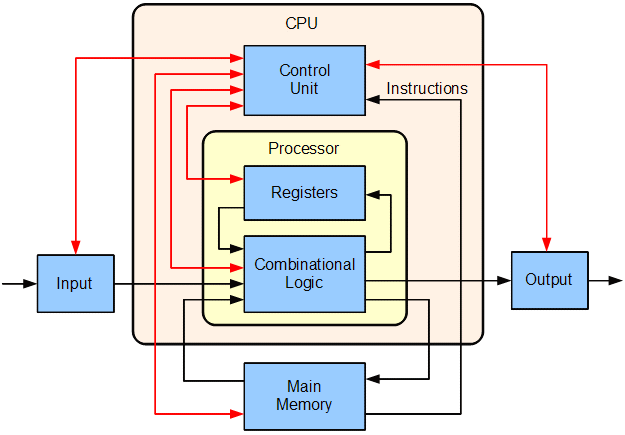Computer Hardware
reading
Cyganek section 2.1
Modern computers implement a von Neumann architecture which consists of (ref: Wikipedia):
A processing unit that contains an arithmetic logic unit and processor registers
A control unit that contains an instruction register and program counter
Memory that stores data and instructions
External mass storage
Input and output mechanisms
An example architecture is shown here:

Fig. 2 (Lambtron / Wikipedia)
Our program and the data it operates on is stored in the main memory of the system. We need to move that from the main memory into the processor.
The arithmetic logic unit (ALU) performs the basic instructions on the data. The commands that it executes are processor-specific, and if we wanted to code them directly, we’d write our code in assembly language. Luckily we don’t need to do that—instead we’ll code in C++ and use a compiler to translate our code into the machine-specific instructions.
Data moves through a memory hierarchy, typically something like
main memory → L3 cache → L2 cache → L1 cache → processor registers
Tip
We can see how big the cache is on our (Linux) computers by doing
cat /proc/cpuinfo | grep cache
The further away the data is from the processor, the longer it takes to move it to the processor, but the larger the pool of memory.
There are some instances (that we’ll see later), where knowledge of this memory hierarchy can allow us to write faster programs.